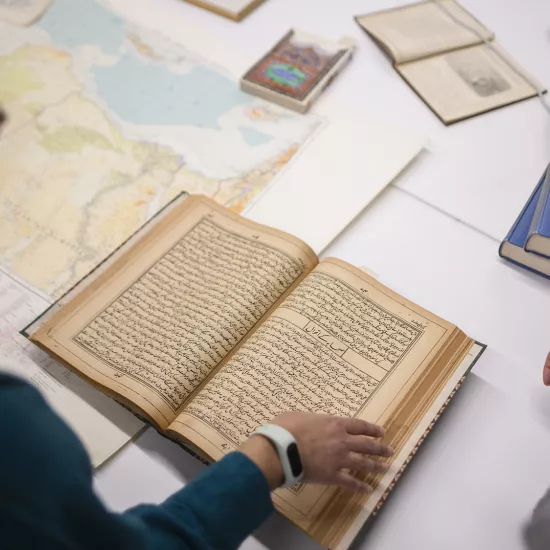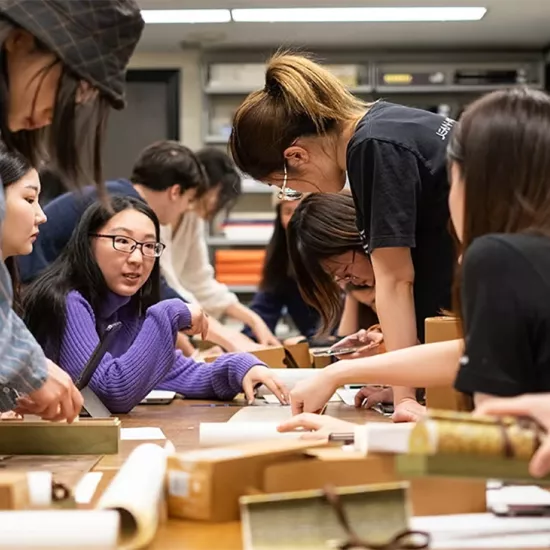UTM mathematician wins prestigious Sloan Fellowship for work in quantitative topology

UTM's Yevgeny Liokumovich has won a prestigious Sloan Research Fellowship. The two-year fellowships, awarded annually since 1955, honour “extraordinary U.S. and Canadian researchers whose creativity, innovation, and research accomplishments make them stand out as the next generation of scientific leaders.”
Liokumovich, an assistant professor of mathematics, will use the fellowship to pursue his study of quantitative topology and a specialized area of geometric analysis known as Min-Max Theory.
Topology is the study of what properties of a shape are preserved when that shape is twisted, stretched, and otherwise deformed. It can involve simple ideas like comparing a circle to an oval, a soccer ball to a football, or a doughnut to a coffee cup. (A doughnut and a coffee cup are considered topologically identical — one can be squashed and distorted into the other without destroying their key distinguishing characteristic, a loop around a single hole that defines the three-dimensional shape known as a torus.)
While min-max problems can involve circles, spheres, and tori, mathematicians like Liokumovich also work with more complicated shapes, involving higher dimensions and other confounding factors, to solve problems related both to advanced mathematics and everyday scenarios.
“Suppose a group of tourists wants to get to the other side of a mountain range,” he says. “They want to find the path with the lowest possible elevation among all the paths connecting the two sides of the range. In other words, they want to minimize the maximum.”
Min-max problems get more complicated when a shape has holes, when it’s necessary to trace several paths at once, when the position of one traveler affects the positions of others, when the challenge involves finding the min-max of a surface or volume rather than a line, and for many other reasons. They’re useful not just for planning a mountain pass, but also for understanding the deep structure of universal spacetime.
“I'm interested in all spaces that can be locally described mathematically as a flat plain or its higher dimensional analogs. What are the ways they can be deformed? What kinds of geometry can they possibly have?” Liokumovich says. “Min-Max Theory can be used to construct objects known as minimal surfaces. Minimal surfaces have been used to prove important results in General Relativity, and I am hoping that they will also lead to new insights.”

The Theory of General Relativity sets out the rules by which gravity can warp, stretch and twist the fabric of spacetime. Geometric analysis and quantitative topology help describe what’s happening locally — for instance with the extreme gravity around black holes or neutron stars — and also globally, helping scientists map out the overall curvature and shape of the universe.
Liokumovich says we don’t yet know whether the universe should be considered more like a soccer ball, or more like a doughnut.
“Does the universe contain holes? And if so, how big are they?” he asks. “One question is how many billions of years you would need to contract a hole at the speed of light. If it would take longer than the life of the universe to close it, then for all practical purposes, it cannot contract.”
Liokumovich moves back and forth between pure math and real-world questions.
“In classical topology, one space can be deformed into another, but what really happens and how much things can stretch, you have no idea. It's really, really hidden in the algebra. To somehow get that out of the algebra is one of the goals of quantitative topology,” he says.
Regarding the Sloan Fellowship, Liokumovich says the biggest challenge he faced in winning the honour had nothing to do with mathematics.
“Konstantin Khanin, our chair, had encouraged me to apply. He was very enthusiastic, but I was kind of unsure. I always hesitate asking people for reference letters. They’re very busy people working on very important problems. But Konstantin encouraged me to overcome that,” he said.
Liokumovich, who grew up in Kazahkhstan and moved to Toronto in Grade 11, did his undergrad work and PhD at the University of Toronto. He worked abroad for several years at
Imperial College London, MIT, and the Institute for Advanced Study in Princeton. He is absolutely delighted to have returned home before winning this fellowship. There is nowhere else he’d rather be conducting his research.
“The UTM Department of Mathematical and Computational Sciences has some really strong, fantastic people. I’m very happy to be in this very nice place,” he says



